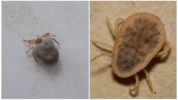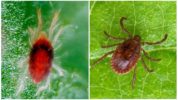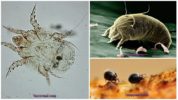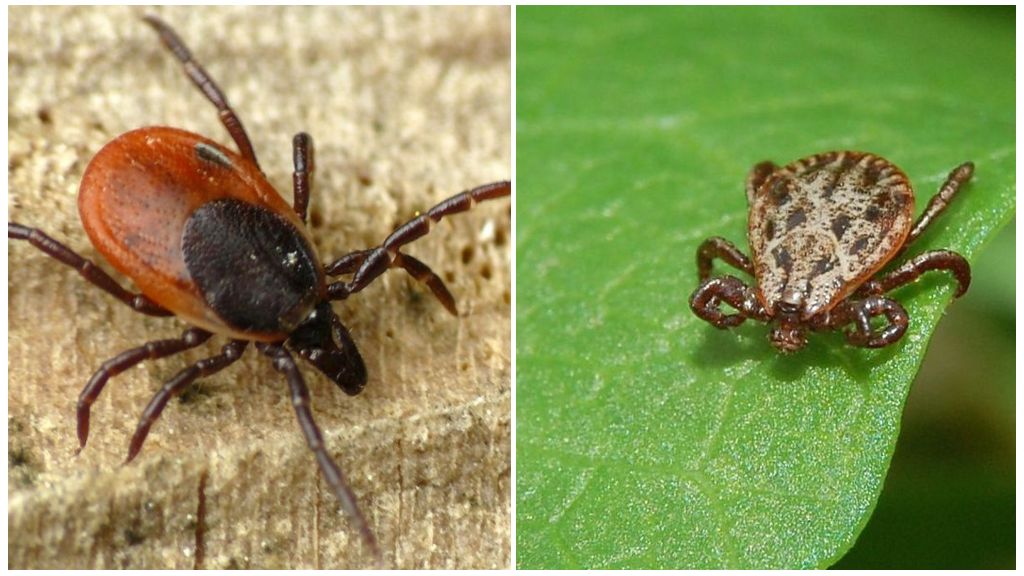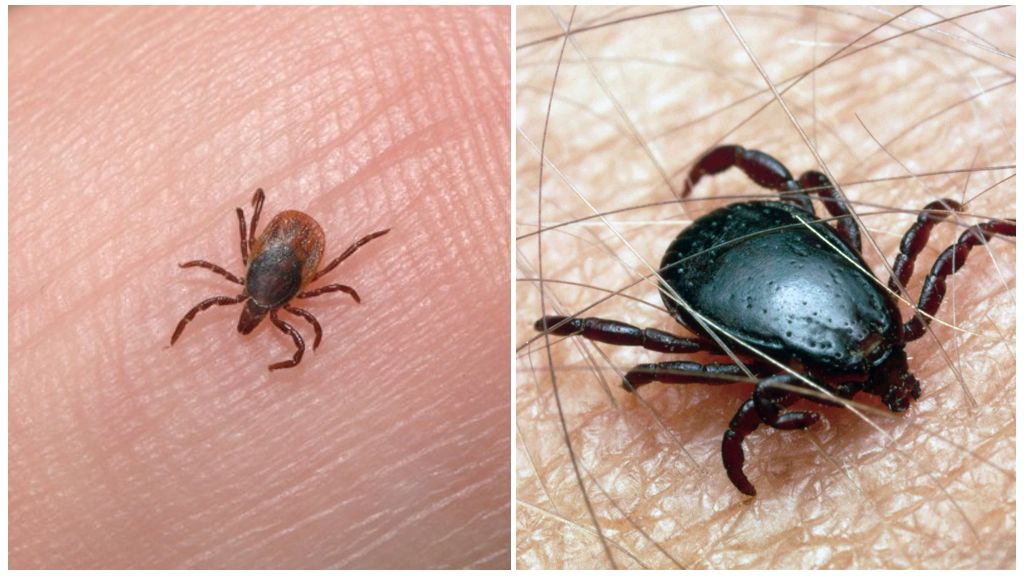- Gray tick and settlement tick
- Spider mite and grass mite
- Types of Ticks
What color ticks depends on their variety. More than 40 thousand are known. types of ticks. Are different dimensions, lifestyle, color. In some representatives of arachnids, body color depends on how long it has been eating. The color scheme is determined by the environment, lifestyle. Most of them are beneficial creatures because they help decompose organic matter. A certain group is harmful to plants, several species pose a danger to humans.
Gray tick
Typical representative ixodid ticks. It feeds on the blood of animals, birds, people. The body color depends on how long the arachnid has been without food. The body size of a hungry tick does not exceed 3 mm, the color is dark - black, brown, brownish, red.
In the process of nutrition, the body increases in size. The abdomen reaches a length of 1-2 cm. The color turns gray. A creature with a round body, a small head, small paws can be found on the body of a dog, cat, human rodent. The photo can be seen further.
As soon as the gray tick is saturated, it disappears to fulfill its mission - to lay eggs, to continue development. On the spot bite a red spot remains, inflammation, swelling minor itching. People with sensitive skin get allergies.
Important!
Also ixodid ticks spread dangerous diseases: borreliosis, tick-borne encephalitis. The incubation period lasts an average of 14 days. The first symptoms are similar to flu. Diseases affect the brain, central nervous system, muscles, in severe cases lead to paralysis, dementia, disability, death.
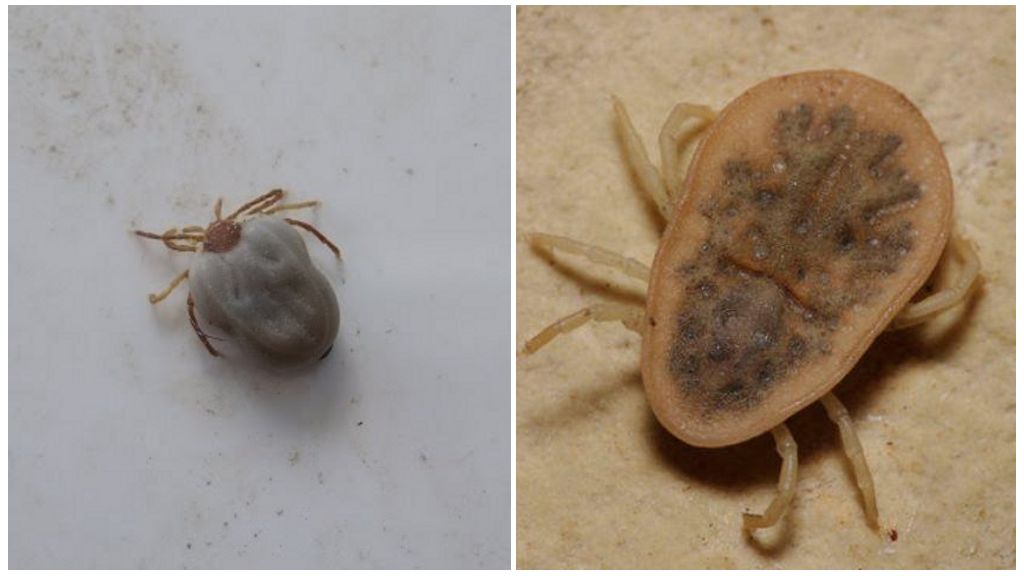
Village tick
The official name is Ornithodorus papillitus. In total, 110 species are known, distributed around the world. Eat settlement ticks blood. Dangerous diseases spread - relapsing fevertick-borne encephalitis. Infection occurs during a bite, the discharge of a parasite into the wound.
Larvae, adults in a small hungry state - up to 3 mm. Body color is light beige or brownish. Adult females, males with tuberous chitinous cover. Beige tick in the process of feeding increases in size up to 2 cm. Found on the body of pets, animals, birds, people.
Spider mite
It feeds on plant juices, prefers certain species or affects everything. Body size does not reach 1 mm. You can notice the pest by the results of its vital activity. Tubercles, dark spots appear on the leaves of plants. The culture stops growing, the leaves become covered with cobwebs, curl, fall off.
Interesting!
Spider mite rapidly developing, parasitizing all stages, living in the warm season. Colony growth can be restrained by cold, humid weather. Spider mites are red, blue, yellow, green, orange, white, beige. You can see with a strong infection of the plant or under a microscope.
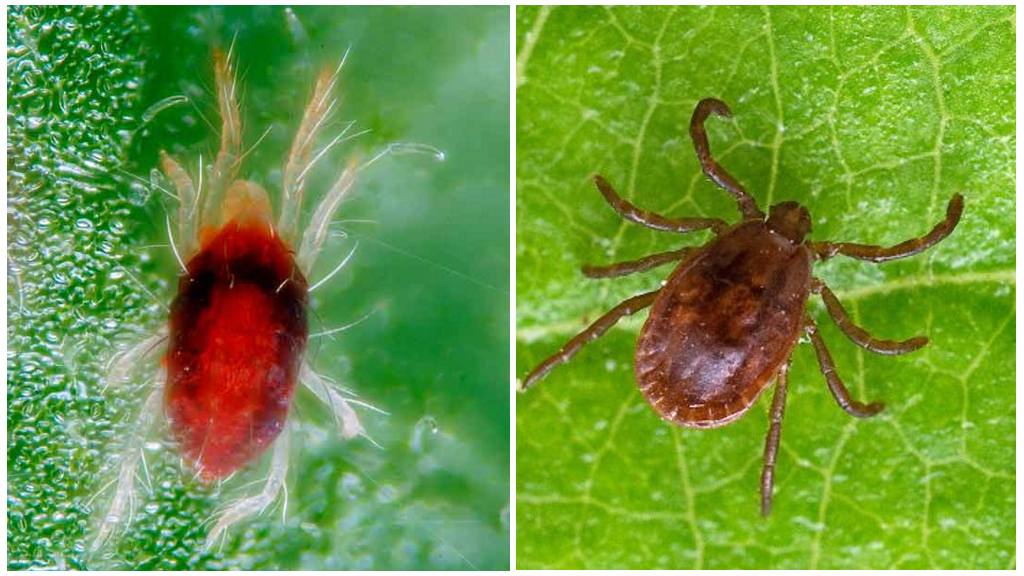
Grass tick
Agricultural pest. There are two types - clover reddish-brown, green grassy. They are active from March to mid-spring. The large areas of the sites on which clover and lawn grass are affected are amazing.With a large number of pests, plants dry up, die. Females lay eggs in the soil, young pests are born next spring, destroying new plantings. Nymphs differ from adults in a lighter color - almost light green.
Gallic
A microscopic creature, the existence of which can be found on the traces of his life. It affects certain types of plants. More than 200 varieties are known. Gall mites are predominantly yellow. They feed on plant juices. Eggs are laid on the leaves, forming dark, reddish galls. There, larvae develop, making numerous moves in the plate. Unlike its relatives, it has only 2 pairs of limbs, an elongated body shape. Gardeners and gardeners fight numerous colonies of gall mites every year.
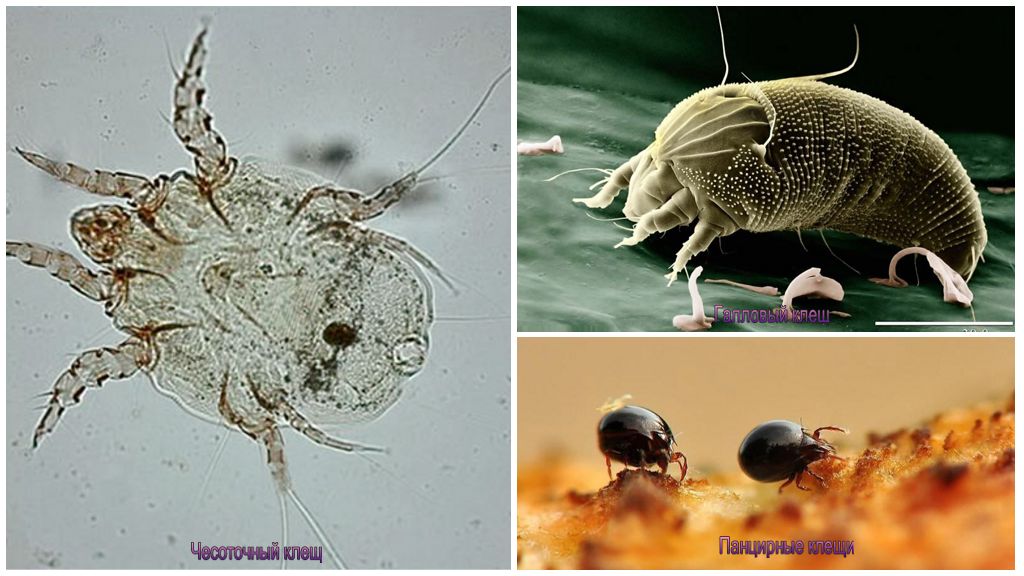
Shell Mites
They live on soil; some species live on trees. They feed on decaying organic matter, mushrooms, lichens, carrion. They are beneficial for the environment, but also dangerous for animals, birds, because they transfer helminth eggs - tape worms. A small creature of red-brown color. Head, legs, lower abdomen lighter.
Scabies mite
A parasitic creature of microscopic dimensions. It is possible to consider the structural features of the body only under a microscope. The color is gray. Lives scabies mite lives on the human body, animals. It feeds on particles of the skin, secretions of the sebaceous ducts. Adult individuals, nymphs of different ages live under the skin, making numerous moves. The products of their vital activity cause severe itching.
On a note!
Mating of mature individuals occurs at night on the surface of the epidermis. After this, the fertilized female makes her way under the skin, builds her mazes, and lays eggs. Infection occurs through contact with a sick person, through his things.
Initially, signs of infection appear on the hands - between the fingers, then the tick moves to the genitals, stomach, chest, neck, buttocks, legs. Itching intensifies in the evening, at night keeps you awake. What kind of disease this can be determined by the symptoms, but a specialist can diagnose the disease, prescribe treatment.
